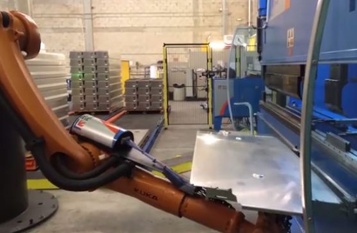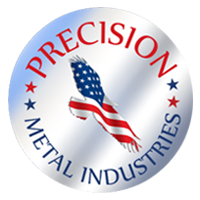When conducted with manual operations, metal forming can be an expensive and timely process. The use of operators to set the punches and ensure that the die is properly tooled can result in inconsistencies in the quality of the finished product. Parts that have a requirement for positive and negative bends, for example, require the operators to manually turn the part, and then move it between multiple steps of the forming process. This requires both attentiveness and multiple operators, which can hinder manufacturing speed.
 Human Error
Human Error
In an automated process, robots and computers control the flow and placement of parts in the forming process. Using automation ensures that the parts will be placed in the correct position each time using CNC programs and grips. Because the material handling is automatic, it is performed in precisely the same manner every time, eliminating potential errors in positioning that are possible with human operators.
Computer control also allows for parts to be transferred between stages with the same precision, while eliminating human contact with the part. Operator presence is required only to ensure that the equipment is functioning normally.
Around-the-Clock Production
Automated forming does not suffer from the same restrictions as manual forming when it comes to sustained production. When human operators are involved, machinery experiences downtime. The company may also lose money due to operator breaks, illnesses or injuries, or even simple changes in shift workers.
Additionally, due to the reduced need for operators associated with automation, an operator who is monitoring a process can easily be relieved without interruption to production. Even if an operator were to step away for a brief time, the production can continue, increasing the efficiency of the production operation.
Adding to the increased productivity of automated forming is the fact that cycle times for parts can be greatly reduced. Automation can result in increased material handling capabilities, as the equipment holds the capacity to move parts that are too heavy or too large for humans. Additionally, decreasing the cycle time of parts will allow for production of more parts with a lower budget.
Cost-Efficiency & Flexibility
Lowered costs are a great benefit of automated forming as well. The flexibility of robotic forming allows for production of a wide range of parts with the same equipment. Retooling is performed quickly, and engineering changes to parts can easily be accommodated. Robots can be programmed to work together in multi-stage processes in an effort to reduce forming time, and can also be used to lift loads that are unsafe for humans. This increases operator safety and can reduce the cost of manufacturing.
Long or short runs can also be accommodated with automation, making it ideal for companies looking for inexpensive options. Should a client need further production, the automation can continue to produce the quantity of parts they need, with the high quality they demand.
Today’s automated processes are a valid option for companies of many different sizes. Regardless of whether a high-volume or limited run is required, automated forming can produce quality parts in a cost-effective manner.




